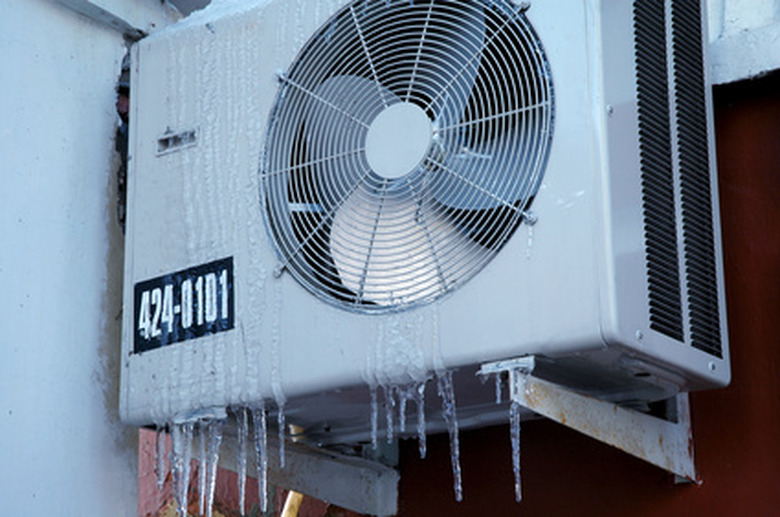How To Calculate SEER Ratings
Tip
Here is an example of a SEER rating calculation. Let's say that your air conditioner uses 3,000 BTU/h and consumes 300 watts per hour. The summer months, when the air conditioner is most frequently used, equal about 1,000 hours. To find the total number of BTUs used during that time, multiply 3,000 by 1,000 to get 3 million BTUs. To find the total number of watt-hours used, multiply 300 times 1,000 to get 300,000 W-h (watt-hours). SEER = total number of BTUs divided by the total number of watt-hours. So, 3 million divided by 300,000 gives a SEER of 10.
The higher the SEER rating, the more energy efficient the air conditioner. SEER can be as high as 20 or more as newer model air conditioners are becoming more efficient. Government regulations have mandated that air conditioners in modern housing units should have SEER ratings of 13 or more.
SEER, which is an acronym for seasonal energy efficiency rating, is a measurement used to describe the efficient use of energy by air conditioners. The measurement is defined and regulated by the Air-Conditioning, Heating and Refrigeration Institute. It is measured in BTUs (British thermal units) per watt-hour of electric energy used in a given cooling season (during the summer months). SEER is determined by calculating a simple equation.
Step 1
Find the BTUs per hour of your air conditioner. This value can be found either on the air conditioner itself or in the owner's manual that accompanied the air conditioner.
Step 2
Find the number of watts used per hour for your air conditioner. This value can be also found either on the air conditioner itself or in the owner's manual that accompanied the air conditioner.
Step 3
Calculate the number of BTUs used in the summer months. Use 1,000 hours, which equates to about 125 days or four months, to represent the late spring and summer months when air conditioners are used. Multiply the number from step one by 1,000 to get the number of BTUs used in the summer months.
Step 4
Calculate the number of watts-hours used in the summer months by multiplying the number from step two by 1,000.
Step 5
Divide the BTUs used in the summer months (the result of step three) by the number of watts-hours consumed in the summer months (the result of step three) to arrive at the SEER rating.
